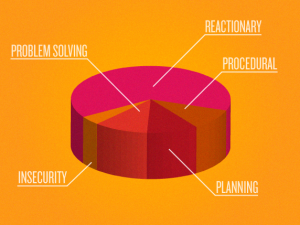6 Steps to Creating The Fundraising Results You Really Want
Want mega productivity in the coming year? Want to raise as much as you possibly can?
Then let’s get cracking on your smart, systematic fundraising plan. I’m talking about
- a plan that gets everybody in your organization on board.
- a plan that uses your energies and connections in the smartest, most efficient way.
- a plan that everybody can buy into and where everybody takes on a supportive role.
Today I’m giving you 6 steps to create a plan that will deliver the fundraising results you really want.
Step 1: Assess: How’d we do last year? What worked and what didn’t work?
Your thinking needs to start with a non-emotional assessment of how things are working right now.
Last year – where were your successes? Where were your disappointments? Did all your fundraising strategies make their goals? What are the trends? Where is the money you are leaving on the table?
Check out these areas:
- Case for support?
- Donor retention?
- Online presence and donation process?
- Major gifts efforts?
- Back office and infrastructure?
Step 2: Identify your fundraising challenges and your opportunities.
It’s pretty easy now to identify where you are weak and where you are strong.
Take a good hard look at your challenges, and see if you can turn them into your opportunities. (That’s what we learned in business school way back!)
You know what areas of your fundraising program need work. And which ones have the most potential for bringing in the cash your organization so urgently needs.
Engage your board and leadership into this analysis – when they understand the possibilities, they are more likely to be willing to invest!
Step 3: What are your organizational goals for the coming year?
Clearly your fundraising plan needs to align with your organizational plans. What does your nonprofit want to accomplish in the coming year?
If you have clear organizational goals, THEN you have a clear rationale for your fundraising.
Then you can make it “all about the kids” or about the sick or about the poor, or about the art – or whatever your mission is out to accomplish.
You don’t have to make it “all about the money.”
Your annual fundraising plan needs to dovetail with your organization vision, plans and goals. It needs to reelect what your organization wants to accomplish in the coming year.
You know exactly what you need to raise. And why.
That is a strong story to share with your donors!
Step 4: Set your fundraising goals based on the numbers:
Your goals should reflect two sets of numbers:
- what your organization needs (happy vision here)
AND
- what you think you can raise (strong dose of reality here).
Step 5: Choose your fundraising strategies.
Now it’s time to be systematic and thorough. Let’s get real about your strategies.
Currently, you’re probably deploying an appropriate set of fundraising strategies – from events to mailings to major gifts and grants.
Where are you going to put extra effort?
Which areas will be getting a new focus, extra energy and push?
Which strategies will get tweaked or amplified?
Step 6: Create tactical action steps.
Here’s where you get specific. If you plan to raise $xxx from your mailings for example, what will you do exactly to create that revenue?
I want to see every single dollar goal backed up with a smart set of well-organized action steps that make sense.
- Create a timetable by month of the activities required.
- Assign responsibilities.
NOW – you have what you need: a smart, organized plan that can take you where you want and NEED to go!
- Define clear jobs for everyone on your fundraising team.
- Lay out a template calendar for each fundraising program and strategy.
- Integrate all calendars into one master timeline for this fiscal year.





